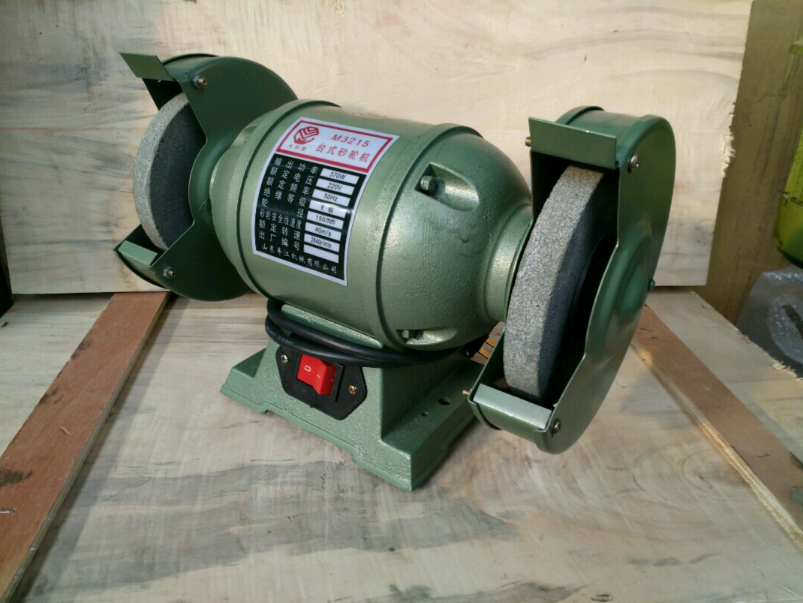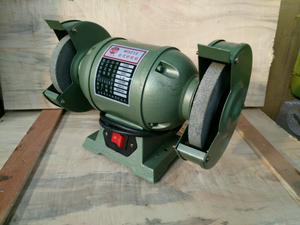
Inspection Methods and Standards for Grinding Wheels - Detailed Explanation - Inspection Services for Warehousing and Factory Audits
The grinding machine is an important equipment used for sharpening tools and removing burrs during grinding. Its quality directly affects operational safety and processing accuracy. To ensure that the grinding machine complies with national safety standards and customer requirements, a systematic inspection process and factory audit mechanism must be established. This article, in combination with the structural characteristics of the grinding machine, will elaborate on its classification, inspection items, inspection standards, and key points of quality control, providing a practical guide for quality inspectors, purchasers, and manufacturers.
I. Classification and Safety Characteristics of Grinding Machines
(1) Common Types
Tabletop Grinding Machine: Fixed installation, suitable for fixed-point operations in the workshop
Vertical/Floor-standing Grinding Machine: Higher power, suitable for processing medium-sized workpieces
Handheld grinding machine: Highly flexible, with insulation and vibration control being the key aspects to be evaluated.
Suspended grinding machine: Mostly used for on-site grinding of large workpieces
(2) Requirements for safe usage environment (Key points of on-site factory inspection)
The opening of the installation position should face the wall, avoiding direct alignment with the passageway or equipment area.
Installation of grinding machines is prohibited in corrosive, flammable and explosive environments.
The floor of the operation area should be dry, with sufficient lighting, and safety warning signs should be set up.
A 1.8-meter-high metal net isolation barrier should be set up 1 to 1.5 meters away from the equipment.
II. Inspection Standards and Basis for Inspection of Grinding Machines
(1) Main Standards and Specifications
GB 3883.3 - 2007 Safety of Handheld Electric Tools
GB/T 7442–2007 Safety Requirements for Grinding Machines
JB/T 3715–2016 Technical Specifications for Bench-Type Grinding Wheel Machines
Special security requirements for enterprise technical agreements and purchase orders
(2) Key Points of Factory Audit
Quality Management System
Does it have ISO 9001 system certification? Are there complete records of incoming material inspection (IQC) and process inspection (IPQC)?
Do the safety components (such as protective covers and brackets) have incoming material inspection reports and supplier qualification filings?
Production and testing capabilities
Whether the grinding wheel dynamic balance testing equipment, speed calibration instrument, and insulation strength testing instrument are calibrated regularly
Are there records of final product inspection and an account of factory tests?
Documents and Traceability System
Is the product nameplate information consistent with the certificate of conformity and the instruction manual?
Whether the key safety components (such as grinding wheels and motors) have traceability capabilities
III. Inspection Items and Methods for Key Components
1. Safety Inspection of Protective Covers
Material and Thickness: The thickness of the steel plate should be 1.5–3mm, and the strength must be able to withstand the impact of a broken grinding wheel.
Opening angle: For desktop/desk-mounted models, ≤ 125°; for horizontal centerline above models, ≤ 65°; for suspended models, ≤ 180°
Installation clearance: The gap between the new grinding wheel and the front surface of the cover is 20–30mm, and the gap on the sides is 10–15mm.
2. Requirements for Grinding Wheel Quality and Installation
Defect-free inspection: The grinding wheel should be free of cracks and damages. This is verified through a combination of visual inspection and tapping test.
Adhesive compatibility: Resin grinding wheels must not come into contact with alkaline substances, and rubber grinding wheels must not come into contact with oils.
Expiry date verification: Resin grinding wheels typically have an expiry period of 1 year, while rubber grinding wheels have an expiry period of 2 years. The manufacturing date must be checked.
Flange and cushion: Flange diameter ≥ 1/3 of the grinding wheel diameter (for cutting machines, ≥ 1/4), cushion thickness 1–2mm
3. Support Frame and Dust Shield
Frame clearance: Adjustable. Clearance with the grinding wheel ≤ 3mm. The height of the tabletop is equal to or slightly higher than the center of the grinding wheel by 10mm.
Shielding plate: Width is greater than that of the protective cover, the gap with the grinding wheel is ≤ 6mm, and it can be adjusted according to wear.
4. Electrical Safety Performance
Reliability of PE connection: Grounding resistance ≤ 0.1Ω
Insulation resistance: Cold state ≥ 2 MΩ, Hot state ≥ 1 MΩ
Switch sensitivity: The start and stop operations are sensitive and there is no sticking.
IV. Performance Testing and Operation Inspection of the Entire Machine
1. No-load Operation Test
After startup, run at idle for 2-3 minutes and observe for any abnormal vibrations or noises.
The radial runout of the grinding wheel must comply with the standard (generally ≤ 0.15mm)
2. Safety and Stability
Base rigidity: The equipment is installed on a stable foundation without any shaking.
Speed verification: The actual speed must not exceed the safety speed line marked on the grinding wheel.
Temperature rise test: The temperature rise of the motor housing does not exceed the allowable value (for example, for Class K insulation, it should be ≤ 80K)
3. Wear and Life Assessment
The grinding wheel must be shut down when its diameter reaches the limit size (for example, for flange-mounted type, it reaches D3 + 10).
It is recommended to conduct regular dynamic balance checks to prevent the equipment from experiencing increased vibration due to the wear of the grinding wheel.
V. Sampling Plan and Decision Rules
Sampling Standard: According to GB/T 2828.1, generally select the General Inspection Level II. The AQL values can be set as Critical 0, Major 1.5, and Minor 4.0.
Defect Classification:
Serious defects: Missing protective cover, cracked grinding wheel, and failed grounding.
Main defects: The bracket cannot be adjusted, the flange size does not match, and the switch is malfunctioning.
Minor defects: Inadequate labeling, minor scratches on non-critical areas
Inspection determination: If any serious defect is found, the entire batch is deemed不合格 (unqualified). If the main defect exceeds the AQL standard, the batch is rejected.
VI. Operating Procedures and On-site Management (Key Points of Factory Inspection Interview)
Personnel Training: Operators must undergo safety training and be familiar with the equipment structure and risk points.
Homework Guidelines:
When grinding, stand on the side of the grinding wheel and wear protective glasses and a mask.
It is prohibited for two people to use the same grinding wheel at the same time. It is also prohibited to grind oversized, undersized or non-ferrous metal workpieces.
Daily inspection: The equipment must have daily inspection records, including items such as wear of the grinding wheel and gap of the bracket.
Emergency handling: On-site should be equipped with emergency stop switches and first aid facilities, and employees should be familiar with the emergency response procedures.
VII. Packaging, Labeling and Document Requirements
Product nameplate: Indicate specifications, rotational speed, manufacturing date, and manufacturer information
Random files: Please provide the certificate of conformity, user manual, electrical schematic diagram and warranty certificate.
Packaging and transportation: The equipment should be properly packaged to prevent collisions during transportation. In humid environments, anti-rust treatment should be carried out.
Summary
The grinding machine, as a commonly used equipment with high risks, its quality control must strictly follow safety standards. Through systematic factory inspection and shipment inspection, combined with key component checks, electrical safety tests and operational stability verification, the risk of use can be significantly reduced. It is recommended that purchasers focus on reviewing the quality system and testing capabilities of the suppliers when choosing them, and conduct mid-production inspections during the manufacturing process to ensure that the products comply with safety regulations from design to delivery.
Share this product

Inspection Methods and Standards for Grinding Wheels - Detailed Explan
The grinding machine is a device used for sharpening tools and removing burrs during grinding. Its quality directly affects operational safety.
